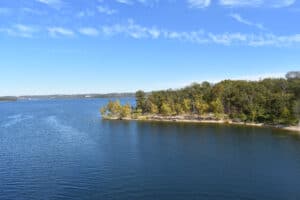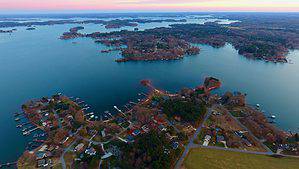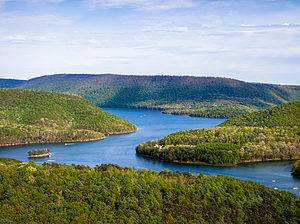Situated along the border of Georgia and Florida, Lake Seminole is the largest man-made lake in Florida. This giant man-made reservoir has a surface area of 37,500 acres, making it the third-largest lake in Florida. While initially built for navigation and the generation of hydroelectric power, Lake Seminole also boasts excellent fishing, watersports, and scenic views.
Although Lake Seminole isn’t the deepest lake in Florida, it is deeper on average than most Florida lakes. With an average depth of 10 feet and a max depth of 30 feet, Lake Seminole ranks deeper than the much larger Lake George and Lake Okeechobee. It measures nearly 35 miles long and 2 miles at its widest point. At full pool, Lake Seminole possesses a surface elevation of 77.5 feet and features approximately 376 miles of shoreline.
Thirty-five parks surround the shores of Lake Seminole, 10 of which are maintained by the U.S. Army Corps of Engineers. Seminole State Park covers 604 acres on the north shores of the park in southwestern Georgia. Meanwhile, Three Rivers State Park covers 686 acres of wetlands on the southern shores of the lake, just north of Sneads, Florida. The reservoir teems with an abundance of fish, including bass, crappie, catfish, and chain pickerel. While this variety makes fishing the most popular activity at the lake, the fun doesn’t stop there. You can access the lake from several marinas, piers, and boat ramps, several of which offer kayak and canoe rentals. Additionally, the lake hosts many other plants and animals that visitors can observe from a distance, including American alligators, tortoises, snakes, and birds.
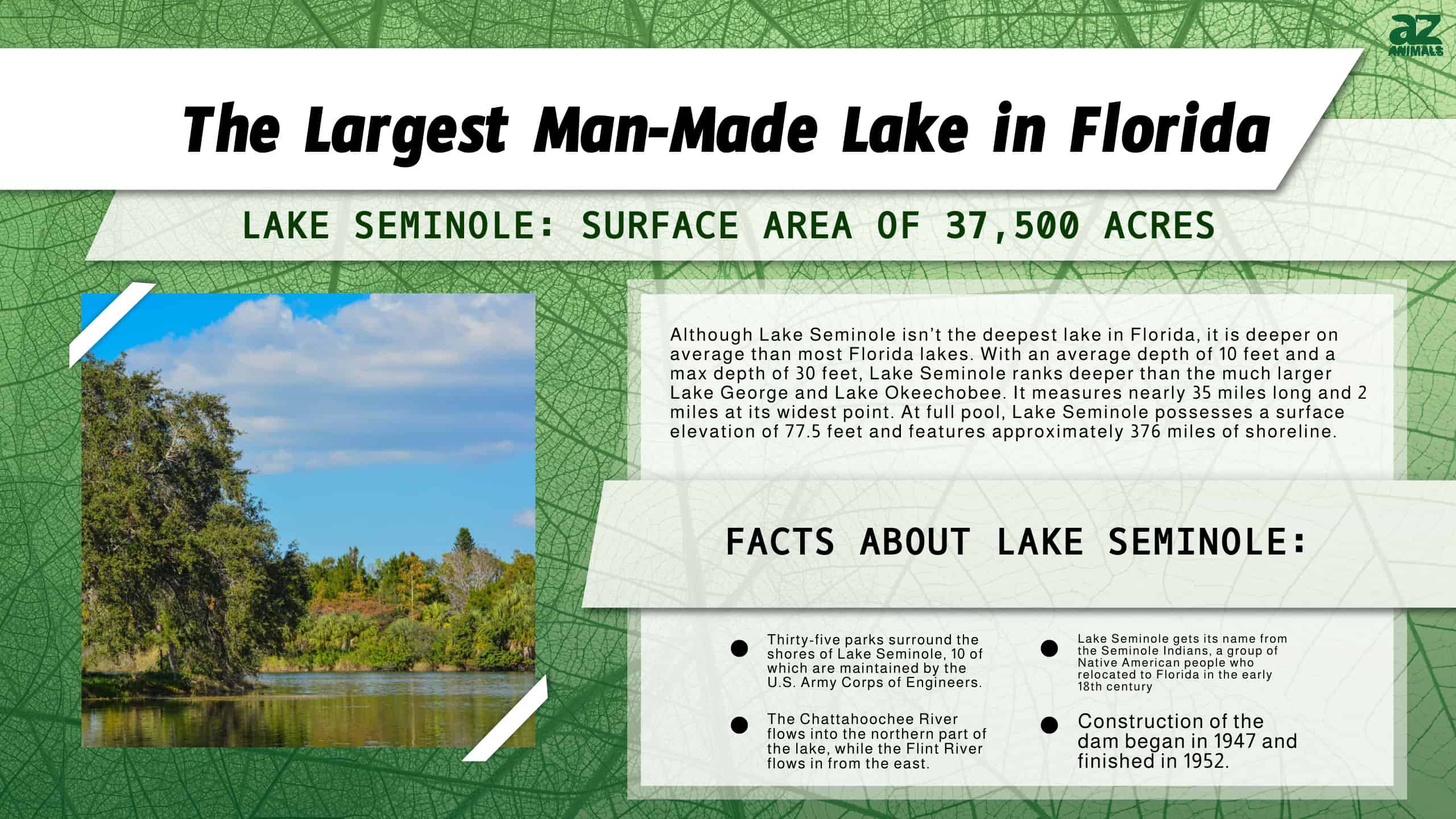
Where is the Largest Man-Made Lake in Florida Located on a Map?
Lake Seminole, the largest man-made lake in Florida, can be found in northwestern Florida, right along the southwestern border of Georgia. The town of Chattahoochee borders the lake on its southern shores.
History of Lake Seminole
Lake Seminole gets its name from the Seminole Indians, a group of Native American people who relocated to Florida in the early 18th century. However, the area’s history stretches back to a time before the Seminoles arrived in Florida. The Apalachee people settled the lands south of where Lake Seminole now rests sometime in the late 15th century. Within a few decades, they were joined by Spanish settlers. The Spanish built the mission San Carlos de Los Chacatos in 1674 on the western banks of the Apalachicola River. They constructed the mission in response to an armed revolt by the native Chacato people, a now-extinct tribe. The mission served a critical strategic function until its abandonment after an attack by British forces led by James Moore during Queen Anne’s War in the early 1700s.
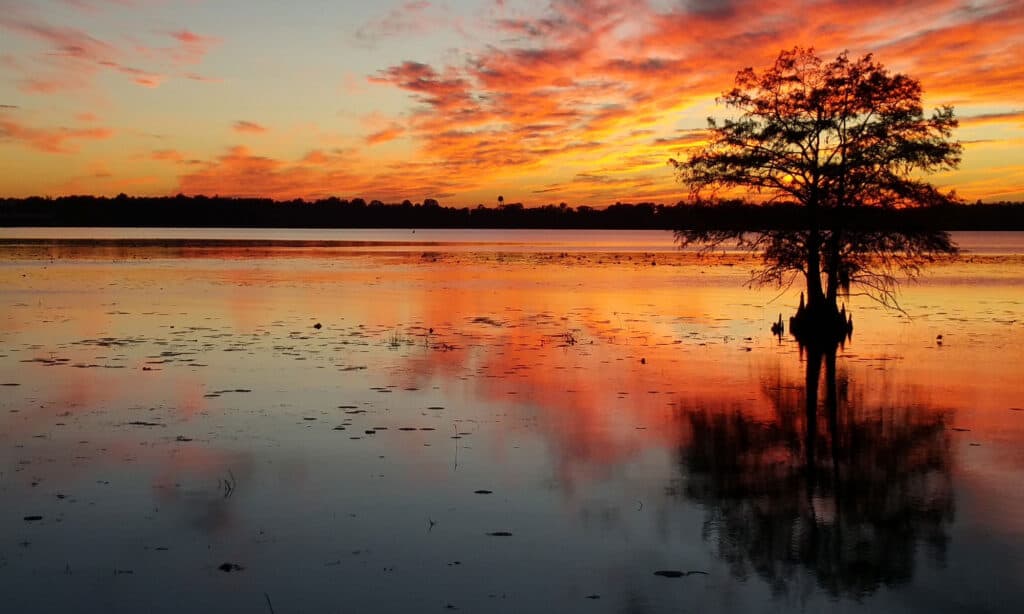
This lake gets its name from the Seminole Indians, a group of Native American people who came to Florida in the 18
thcentury.
©Carolyn Davidson Hicks/Shutterstock.com
Increased demand for land and power in the early and mid-20th century prompted lawmakers to come up with solutions for both. As a result, the U.S. decided to construct numerous dams throughout the country on major waterways to generate electricity and make waterways more navigable. The United States Congress authorized the construction of the Jim Woodruff Lock and Dam through the Rivers and Harbors Act of 1946. The dam gets its name from James W. Woodruff, a Georgia businessman who championed the project’s development. Engineers chose the Apalachicola River’s origin as the dam’s site, which now sits on the southern shores of Lake Seminole. Construction of the dam began in 1947 and finished in 1952. By 1957, Lake Seminole had flooded most of the land now covered by the lake. The entire project cost about $46.5 million, nearly 1.5 times its initial expected cost.
Lake Seminole Geography
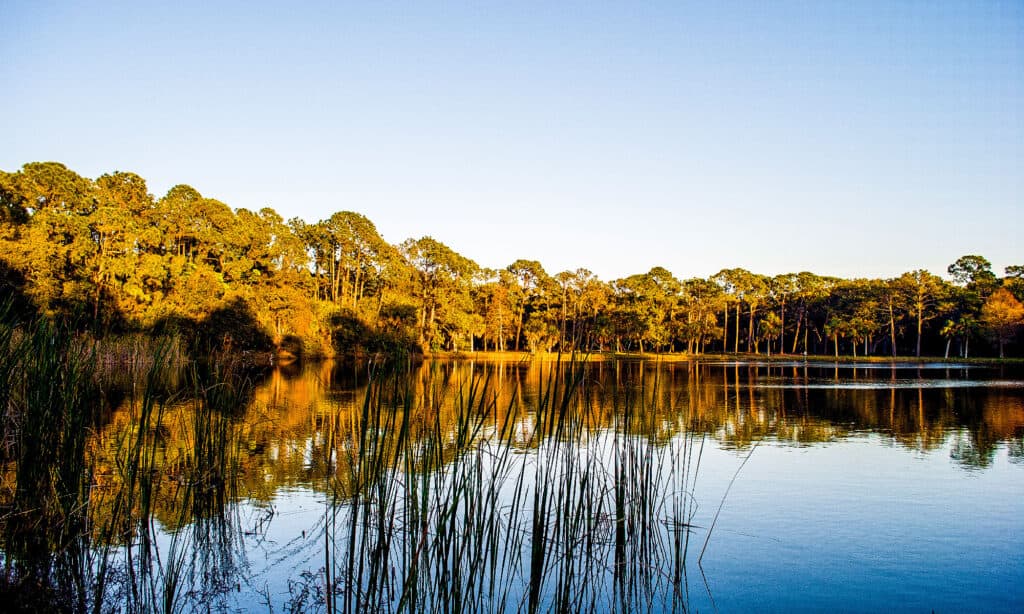
The landscape around Lake Seminole is a mixture of wetlands and pine and hardwood forests.
©Jeremy A. Casado/Shutterstock.com
Lake Seminole resides in northwestern Florida, right along the southwestern border of Georgia. The Chattahoochee River flows into the northern part of the lake, while the Flint River flows in from the east. At the southern end of the lake rests the Jim Woodruff Dam. The dam impounds the lake on its southern border and marks the starting point of the Apalachicola River.
The town of Sneads is located just south of the lake on the western side of the Apalachicola River. Meanwhile, the town of Chattahoochee borders the lake on its southern shores and lies just across the Apalachicola River from Sneads. Tiny coves, pools, and inlets dot the shoreline and the area surrounding the lake. The landscape is a mixture of wetlands and pine and hardwood forests. Along the shores of the lake, you can find a variety of plants, including waterlilies, cattails, and hydrillas.
Lake Seminole Reviews
Reviews of Lake Seminole vary from person to person. However, most people leave positive reviews upon visiting the lake or its surrounding parks. Most reviews state that the lake feels quite peaceful and calm. Many reviewers remark that the lake appears beautiful and ecologically diverse. Anglers frequently report that the lake features some of the best fishing in Florida thanks to its bevy of fish. The hydrilla in the lake clears the water and makes great cover for bass and other fish.
The complaint that most people report regarding Lake Seminole concerns its accessibility. Some people complain that the lake lacks enough parking or boat access. Additionally, anglers and boaters attest that the lake poses tricky navigational hazards due to standing timber and winding backwaters. If you don’t know where you’re going, you can easily get lost or run into half-submerged trees. That said, Lake Seminole features several well-marked boat paths to help you stay on course.
The photo featured at the top of this post is © Norm Lane/Shutterstock.com
Thank you for reading! Have some feedback for us? Contact the AZ Animals editorial team.



